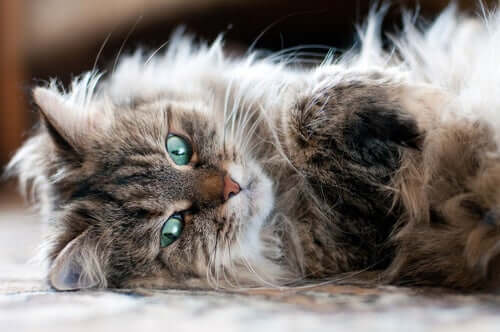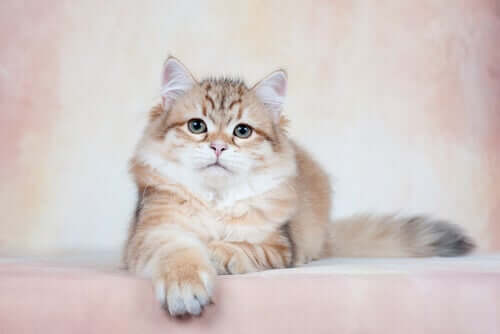Learn All About the Siberian Cat

Solid, big, and with abundant semi-long hair. Agile, fast, and a skilled hunter. That’s the Siberian cat, a sociable and affectionate pussycat that will also win you over with its intelligence. In this article, we’ll tell you more details about this Russian cat that earned itself a place in the world of domestic cat lovers.
The Siberian cat, a cat that originated in the Russian and Ukrainian forests
Similar to the Maine Coon and Norwegian Forest, the Siberian cat is one of the so-called “forest cats”. They’re cat breeds with thick, waterproof coats. This condition allowed them to survive in the cold climates they’re native to.
The Siberian seems to have originated in the vast forested regions of Russia and Ukraine. Many consider it the result of a cross between the European cat and the wildcat from the Siberian forests.
Since the time of the Tsars, there’s a record that this animal busied itself keeping the homes of this huge country rodent-free.
The Siberian cat, a cat that originated in the Russian and Ukrainian forests. In recent times, it has caught the attention of cat lovers from around the world.
Some physical characteristics of the Siberian cat
Here are some of the physical characteristics of this cat:
- Size. Medium to large.
- Weight: Between 13 and 22 pounds (6 to 10 kilos) in males and 7 and 15 pounds (3.5 and 7 kilos) in females.
- Compact, solid body.
- Muscular legs of medium length with rounded ends, with tufts of hair between the toes.
- Medium tail with abundant hair and rounded tip, which is wider at the base.
- Various colors, except chocolate, cinnamon, lilac, and fawn. The colorpoint variant of the Siberian cat is called the Neva Masquerade.
- It has a medium-sized, rounded, and broad head.
- Large and slightly oblique eyes that are wide apart.
- Round, pointed ears that are inclined slightly forward and with well-developed hairs inside them.

The coat of this breed is noteworthy. It has thick hair on its belly and the back of the hind limbs. The hair is longer on the neck, chest, hind legs, and tail. It’s thick and shiny on its back, sides, and top of the tail. However, in the summer, it can lose a lot of fur and even look like a short-haired cat.
Temperament and personality
Despite being quiet and affectionate, the Siberian cat can’t be considered a submissive animal. People who admire domestic cats love this detail. This is because that particularity still allows it to be quite communicative and it gets along very well with children and other pets.
Its wild past in the cold Asian forests makes it very active. If you provide this cat places for climbing and hunting and allow it to go out to the backyard, you’ll certainly make it a very happy cat.
This friendly and playful animal is also very loyal to its human family. And it also knows how to get what it wants from humans. However, it doesn’t like being left alone for too long. Therefore, you should take this into account if you plan to adopt a cat of this breed.
A strong, healthy, and hypoallergenic feline
Another great fact about the Siberian is that it’s a strong animal that doesn’t suffer from major health problems. This is due to the natural selection of the breed throughout the centuries.
However, you should remember to brush its hair to prevent knots from forming, especially on the belly.
And another positive thing about this cat is that it’s hypoallergenic. Despite its thick fur, its saliva only contains minimal amounts of the protein that causes allergies.